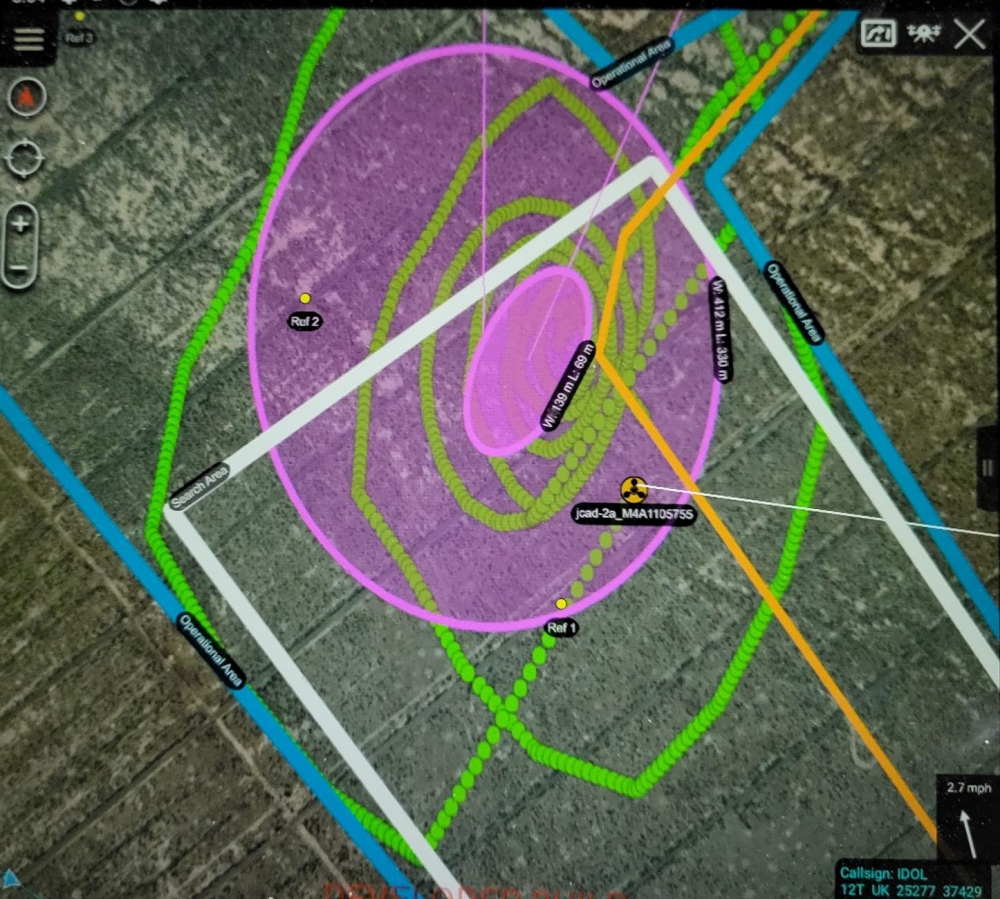announced it has been awarded a $26 million (all options) contract by the U.S. Department of Defense (DOD) to further expand the capabilities of its unmanned autonomous systems (UAS) software to perform chemical, biological, radiological and nuclear (CBRN) reconnaissance missions in collaborative teams and in degraded operating environments.
The Other Transaction Authority (OTA) agreement was awarded through the Joint Program Executive Office for Chemical, Biological, Radiological, and Nuclear Defense (JPEO-CBRND).
Draper will integrate flight software and sensor-driven algorithms that enable teams of unmanned systems to autonomously conduct CBRN missions currently performed by single UASs or in environments where one or more inputs are unavailable or unreliable, such as areas without GPS and zones where GPS may be spoofed. Blending the new technology with Draper’s existing capabilities will allow the warfighter to gain a major tactical advantage—situational awareness—while remaining at a safe distance.
Draper will advance its system under an effort at JPEO-CBRND called CSIRP, which stands for CBRN Sensor Integration on Robotic Platforms. Additional enhancements to the system will include advances in CBRN sensors and further customization of Draper’s All Domain Execution and Planning Technology (ADEPT) autonomy framework.

CSIRP
Earlier this year, the company delivered initial prototypes of its system for a focused assessment. Operators employed the Draper prototype in realistic mission scenarios to communicate as a team and sense and rapidly report CBRN hazards. The new contract allows Draper to continue developing the teaming approach, and to deliver mature prototypes for government testing in 2026.
The autonomous software on the aerial unmanned platform will be designed to operate with the command-and-control user interface for the U.S. Army’s Nuclear, Biological and Chemical Reconnaissance Vehicle (NBCRV) Stryker platform currently being developed by Teledyne FLIR. Draper will integrate communications with the Tactical Assault Kit (TAK) platform, enabling the unmanned systems to send images to a mobile device and overlay the locations of detected objects of interest on an aerial map for human team members—all in real time.
A major focus for Draper is to extend its proof-of-concept air-ground teaming architecture to link multiple systems into a mesh network. With mesh, every autonomous vehicle, including aerial (UAV), ground (UGV) and maritime (USV), becomes an access point and relays messages among themselves. The mission-requirements are to enable decentralized task allocation and task prioritization, collaborative navigation and mapping, path deconfliction and crash prevention, and team planning, control, monitor and networking.
“Draper’s UAS CBRN system is capable of searching even small, cluttered places and detecting CBRN hazards,” said Won Kim, program manager at Draper. “Our novel sensor-driven algorithms will allow the UAVs and robots to perform reconnaissance missions as a team and make real-time decisions about where to go next, increasing their efficiency and effectiveness.”
This award expands on the current state-of-the-art, according to Kim, by introducing robot on robot, swarm, mini-UAV and marsupial autonomous systems. It also advances UAS software in the direction the DOD prefers—to be modular, reusable and open to enhancement by third-party vendors.
The UAS will use Draper’s novel algorithm to synthesize the data from onboard sensors— including GPS, LiDAR, accelerometer, magnetometer and onboard cameras—and be able to communicate with human operators, centralized command centers, and other teamed UASs. Draper’s UAS for CBRN is expected to perform with limited operator interaction. A human operator will be able to override the autonomous agent decisions and redirect or abort the mission, as needed.
Assisting in the development will be Draper’s Human Systems Engineering, a team that will help design the tablet interface to support teaming, and Draper’s Warfighter Systems, which developed the TAK plug-in that enables Draper’s UAS to provide situational awareness at every level—the strategic level, theater level, brigade level and soldier level.
“TAK allows you to bridge from the decision maker to tactical execution,” said Brian Alligood, Draper’s program manager for TAK.
Draper’s UAS CBRN system is currently being transitioned to a program of record for the U.S. Army, which means it will soon be fully operational in the field.
For the base contract, Draper will deliver two collaborative teams each comprising two UAV and one UGV options to support training, documentation, plus the delivery of additional UAS and payloads. The contract period of performance is 36 months, if all options are exercised. Visit us online to learn more about Draper’s platform-agnostic autonomy architecture and software package.
As a nonprofit engineering innovation company, Draper serves the Nation’s interests and security needs; advances technologies at the intersection of government, academia, and industry; cultivates the next generation of innovators; and solves the most complex challenges. Multidisciplinary teams drawn from a broad and deep talent pool of 1,300 engineers and scientists collaborate to develop first-of-a-kind solutions. Draper’s unbiased approach enables the company to focus on their customers’ needs and to deliver new capabilities to them.
Source: Press Release

